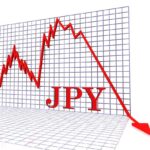EURUSD Slides Below 1.1350 as US Dollar Rallies on Hopes of Trade War De-escalation.
The EURUSD pair continues to face downward pressure as the US Dollar regains strength, bolstered by renewed optimism over an easing of tensions in the US-China trade war. Meanwhile, the Euro struggles amid dovish remarks from European Central Bank (ECB) policymakers highlighting persistent structural weaknesses in the Eurozone economy.
US Dollar Gains Momentum Amid Trade Deal Hopes
Investor sentiment toward the US Dollar improved after reports emerged that China may suspend additional tariffs on selected US imports, such as medical equipment and industrial chemicals. This development, first reported by Bloomberg, was seen as a possible breakthrough in long-stalled trade negotiations between Washington and Beijing.
Trump’s Optimistic Tone vs. China’s Caution
Earlier in the week, President Donald Trump said talks with Beijing were progressing and that a deal was likely, boosting market optimism. However, China contradicted these claims, denying that any negotiations had resumed and reiterating that the removal of all unilateral US tariffs remains a precondition for any trade dialogue.
Despite the mixed messaging, the US Dollar Index (DXY) rebounded from 99.20 to 99.65, with bulls now eyeing a test of the 100.00 level, a key psychological barrier.
Fed Officials Voice Caution Over US Policy Uncertainty
Even with the Dollar’s strength, domestic concerns persist. On Thursday, Minneapolis Fed President Neel Kashkari warned that uncertainty surrounding US economic policy—especially from the White House—may prompt some businesses to prepare for potential job cuts, though no widespread layoffs have begun yet.
While the Fed remains on hold for now, such concerns reinforce the need for cautious forward guidance, even as the market’s attention remains focused on external developments like trade.
Euro Pressured by Dovish ECB Signals
On the European front, the Euro came under pressure after ECB policymaker Olli Rehn expressed concern that medium-term inflation projections may fall below the 2% target. Speaking at the IMF and World Bank spring meetings, Rehn argued that the current data justifies a rate cut in June, further fueling dovish bets in the market.
Holzmann Flags Structural Weakness
Rehn’s concerns were echoed by Robert Holzmann, Austria’s central bank governor, who warned that even if tariffs were rolled back, the economic scars would persist. Holzmann also remarked that the ECB’s future policy path remains “completely open,” suggesting monetary easing remains on the table.
Eurozone’s Fragile Outlook Worsens Rate Cut Expectations
The broader Eurozone economic backdrop continues to paint a picture of fragility:
- Inflation remains low and inconsistent
- Germany is struggling to avoid technical recession
- Manufacturing and industrial output remain under pressure
- Consumer confidence and investment are both subdued
With Rehn and Holzmann’s dovish tone, markets are increasingly pricing in a 25–50 basis point cut from the ECB by the end of the year. This policy divergence with the Fed is pushing EUR/USD lower.
Technical Analysis: EURUSD Eyes Further Downside
From a technical standpoint, EUR/USD has breached support at 1.1380 and is currently testing the 1.1350 area. If sellers maintain control, the next targets are:
- 1.1320 – minor support and 23.6% Fibonacci level
- 1.1275 – April swing low
- 1.1200 – key horizontal support
On the upside, 1.1400 and 1.1465 remain critical resistance levels.
What’s Next for EURUSD?
Looking ahead, traders should monitor:
- Headlines from the US and China regarding tariffs and trade deals
- ECB commentary ahead of the June meeting
- Upcoming Eurozone inflation and GDP data
- Shifts in Fed tone, especially in the face of rising political uncertainty
Unless trade talks break down again or the Fed signals imminent easing, the EURUSD outlook remains bearish in the short term.
Market Implications: Divergence Between Fed and ECB Expectations
Another layer contributing to the EURUSD move is the widening divergence between ECB and Fed policy expectations. While the Fed remains largely data-dependent and cautious about premature easing, the ECB appears increasingly inclined toward preemptive monetary stimulus to combat downside inflation risks and structural economic fragilities.
Markets are currently pricing in at least one ECB rate cut by June, with futures implying the possibility of a 50-basis-point cumulative cut by the end of 2025. On the other hand, despite rising political uncertainty in the US, the Fed continues to emphasize the need for inflation to fall sustainably toward 2% before considering cuts.
This growing policy divergence reinforces Dollar strength, especially as European macro data underperforms. While both central banks are treading carefully in the face of global headwinds, the ECB is more constrained due to slower growth, weaker inflation, and limited fiscal coordination across the Eurozone.
Investor Sentiment and Positioning
Investor positioning also reflects shifting sentiment. According to the latest CFTC data, speculative net long positions on the Euro have started to decline, suggesting a bearish tilt. In contrast, the Dollar remains supported by both safe-haven flows and yield differentials, as US Treasury yields remain more attractive than their European counterparts.
Furthermore, risk appetite has been improving in recent sessions, not just because of trade optimism but also due to stable US economic indicators, including better-than-expected jobless claims and resilient retail sales. This environment favors the USD, especially against currencies backed by more dovish central banks.
Unless risk aversion spikes again—perhaps due to geopolitical shocks or renewed trade threats—the Euro may continue to underperform against the Dollar in the near term.
Final Thoughts: More Downside Ahead for EURUSD?
In conclusion, the EURUSD pair’s recent move toward 1.1350 encapsulates a confluence of bearish pressures: renewed US Dollar strength, uncertainty surrounding the US-China trade war, and rising expectations that the ECB will move first with a rate cut in response to structural and inflationary weaknesses in the Eurozone.
With the Fed in no rush to cut rates and the Eurozone grappling with soft data and hesitant investor sentiment, the outlook for EUR/USD remains skewed to the downside, at least in the short term.
That said, much will depend on headline risk—especially around trade negotiations, political developments in the US and Europe, and the trajectory of inflation on both sides of the Atlantic. Traders and investors should brace for volatility as these narratives evolve in the coming weeks.







